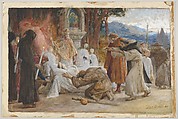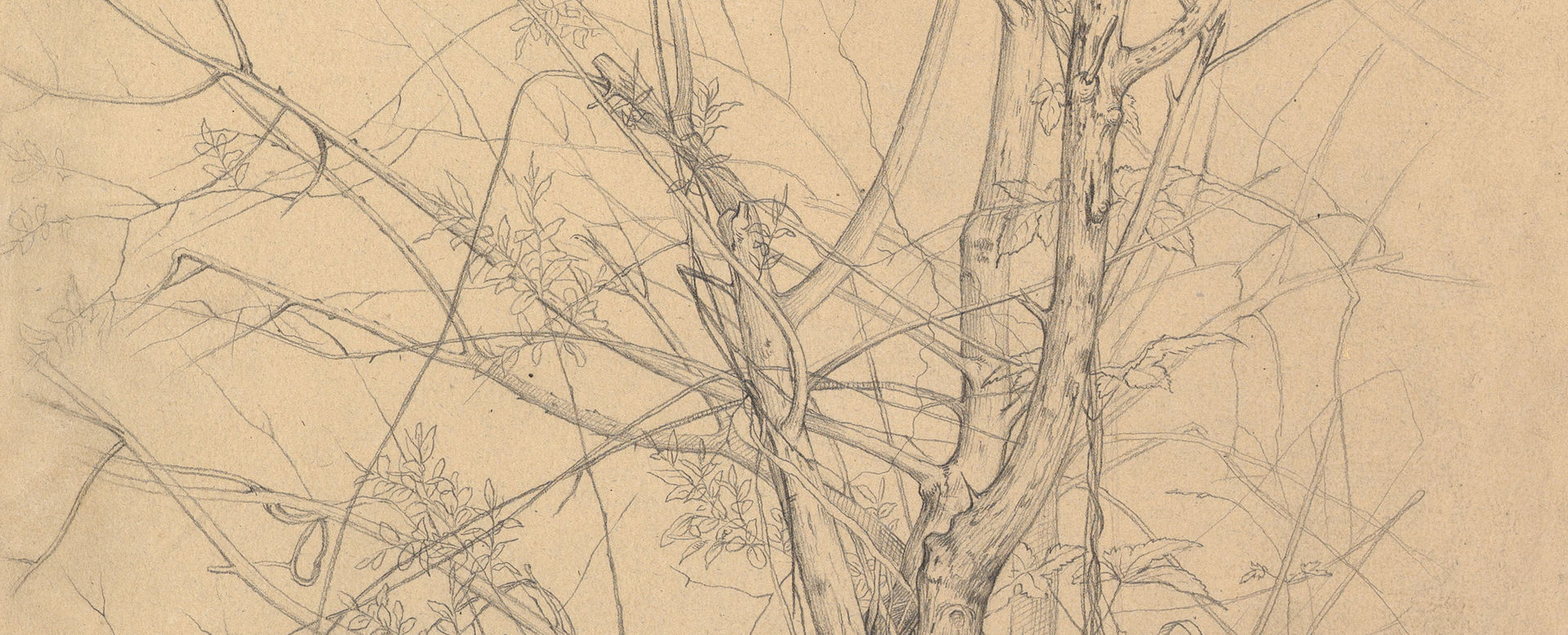The Redemption of Tannhäuser (recto). Figure sketches (verso)
Sir Frank Dicksee British
Not on view
Dicksee's watercolor study describes the dramatic climax of the Tannhäuser legend (a medieval saga popularized by Richard Wagner's opera of 1845). Returning to Eisenbach from Rome, the eponymous hero kneels here by the bier of Elizabeth, a pure former love, and repents his sinful devotion to Venus. As a vision of the goddess dissolves at left, a papal messenger hurries forward with a budding staff that signifies divine forgiveness.
Dicksee’s art was rooted in late Pre-Raphaelite concepts developed by artists such as Edward Burne-Jones, and the present image encapsulates the competing pulls of erotic desire and Christian devotion. Two years before making this drawing, the artist exhibited "The Redemption of Tannhäuser" at the Royal Academy, and here reworks the composition–in 1893 he would send a second version of painting to the World’s Columbian Exhibition in Chicago.
Due to rights restrictions, this image cannot be enlarged, viewed at full screen, or downloaded.
This artwork is meant to be viewed from right to left. Scroll left to view more.





